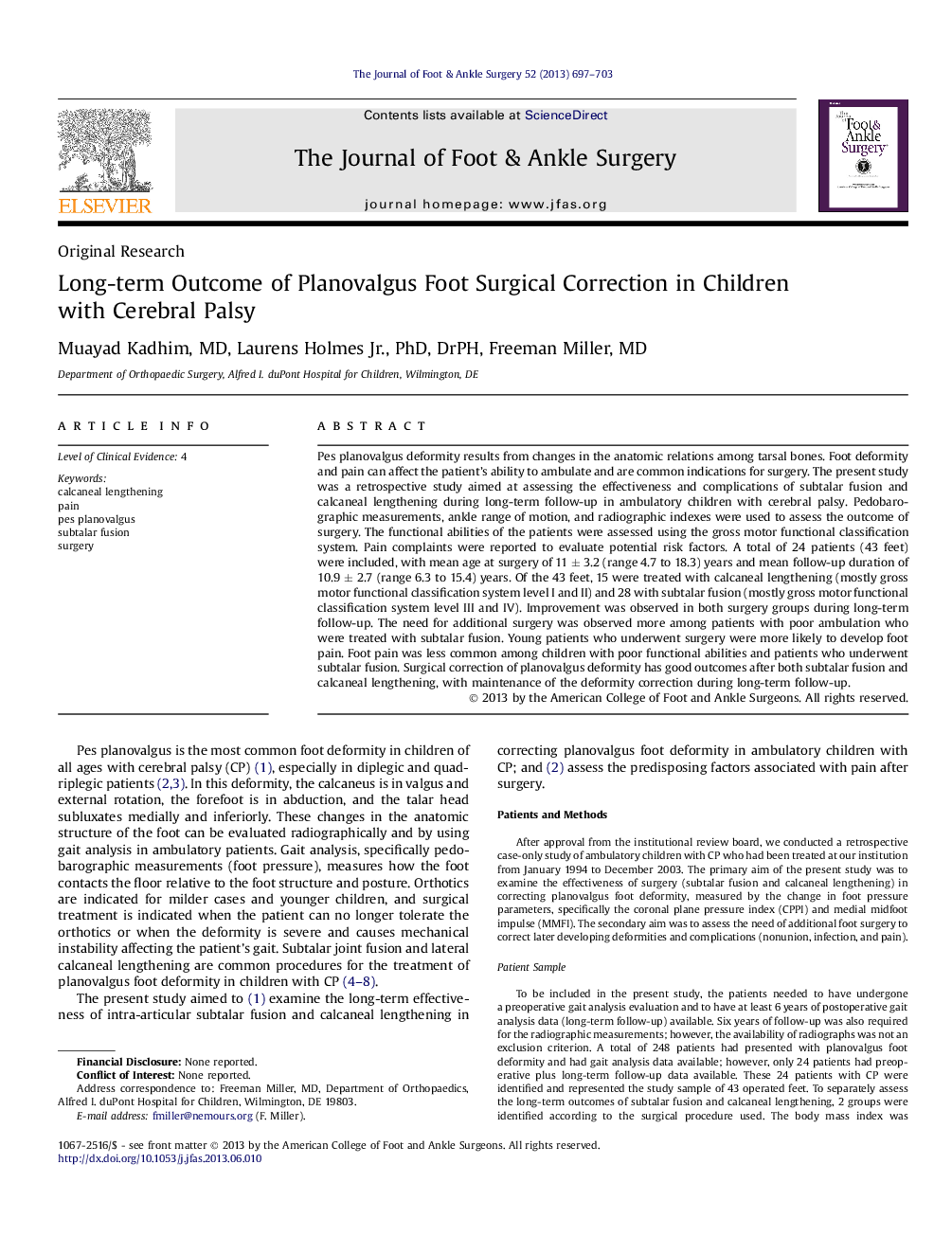| Article ID | Journal | Published Year | Pages | File Type |
|---|---|---|---|---|
| 2715479 | The Journal of Foot and Ankle Surgery | 2013 | 7 Pages |
Pes planovalgus deformity results from changes in the anatomic relations among tarsal bones. Foot deformity and pain can affect the patient's ability to ambulate and are common indications for surgery. The present study was a retrospective study aimed at assessing the effectiveness and complications of subtalar fusion and calcaneal lengthening during long-term follow-up in ambulatory children with cerebral palsy. Pedobarographic measurements, ankle range of motion, and radiographic indexes were used to assess the outcome of surgery. The functional abilities of the patients were assessed using the gross motor functional classification system. Pain complaints were reported to evaluate potential risk factors. A total of 24 patients (43 feet) were included, with mean age at surgery of 11 ± 3.2 (range 4.7 to 18.3) years and mean follow-up duration of 10.9 ± 2.7 (range 6.3 to 15.4) years. Of the 43 feet, 15 were treated with calcaneal lengthening (mostly gross motor functional classification system level I and II) and 28 with subtalar fusion (mostly gross motor functional classification system level III and IV). Improvement was observed in both surgery groups during long-term follow-up. The need for additional surgery was observed more among patients with poor ambulation who were treated with subtalar fusion. Young patients who underwent surgery were more likely to develop foot pain. Foot pain was less common among children with poor functional abilities and patients who underwent subtalar fusion. Surgical correction of planovalgus deformity has good outcomes after both subtalar fusion and calcaneal lengthening, with maintenance of the deformity correction during long-term follow-up.
